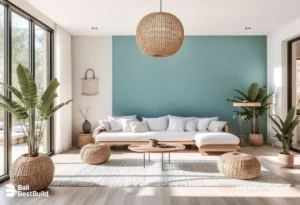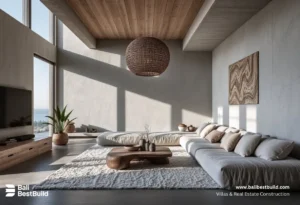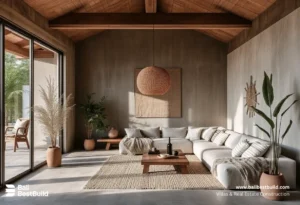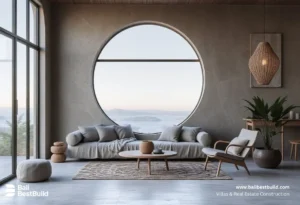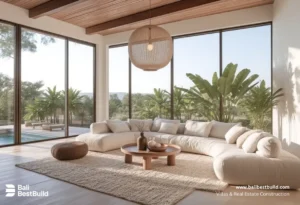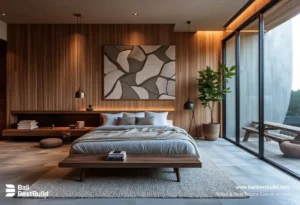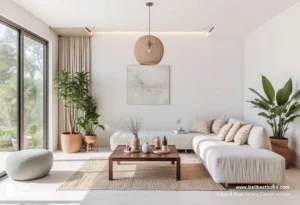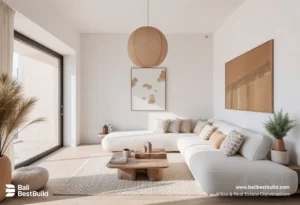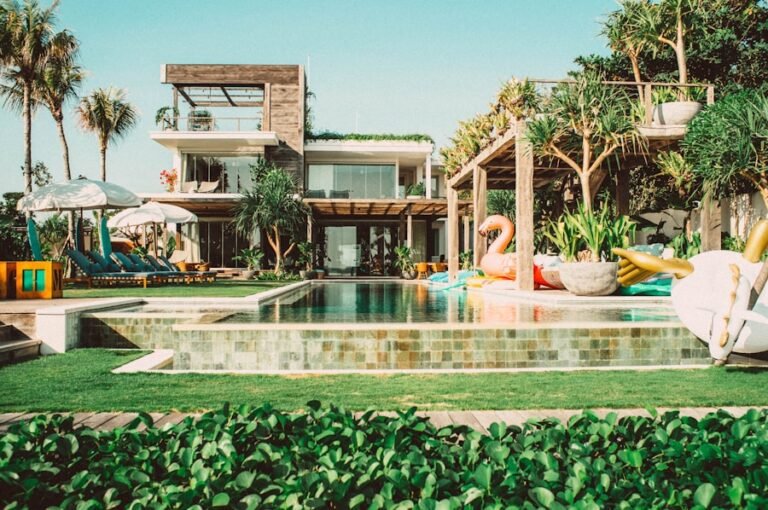Bali, known for its stunning natural beauty and rich cultural heritage, has become a popular destination for travelers seeking a peaceful and rejuvenating retreat. In recent years, there has been a growing trend towards sustainable and eco-friendly living in Bali, with the emergence of green villas that are designed to minimize their environmental impact while providing a luxurious and comfortable living experience. These green villas are not only aesthetically pleasing, but also incorporate sustainable design principles, eco-friendly features, and a strong connection to nature. As a result, they offer a unique opportunity for residents and visitors to experience the beauty of Bali while minimizing their carbon footprint and contributing to the preservation of the island’s natural resources.
Sustainable Design and Architecture
Green villas in Bali are characterized by their sustainable design and architecture, which prioritize energy efficiency, natural ventilation, and the use of locally-sourced materials. These villas are often built using traditional Balinese architectural techniques, such as open-air living spaces, thatched roofs, and natural stone walls, which not only blend seamlessly with the surrounding environment but also help to reduce the need for artificial cooling and lighting. In addition, green villas often incorporate passive solar design principles, such as orientation towards the sun and the use of shading devices, to maximize natural light and minimize energy consumption. Furthermore, many green villas in Bali are designed to be self-sufficient in terms of water and energy, with features such as rainwater harvesting systems, solar panels, and water-saving fixtures, which help to reduce their environmental impact and reliance on external resources.
Eco-friendly Features and Amenities
In addition to their sustainable design and architecture, green villas in Bali also offer a range of eco-friendly features and amenities that contribute to a more sustainable way of living. These features may include organic gardens, composting facilities, and waste recycling programs, which not only provide residents with access to fresh and healthy produce but also help to minimize their environmental footprint. Furthermore, many green villas are equipped with energy-efficient appliances, LED lighting, and smart home systems that allow residents to monitor and control their energy usage. Additionally, green villas often incorporate natural cooling and ventilation systems, such as ceiling fans and louvered windows, which reduce the need for air conditioning and promote a more comfortable indoor environment. Overall, these eco-friendly features and amenities not only enhance the quality of life for residents but also contribute to the preservation of Bali’s natural resources.
Connection to Nature and Outdoor Living
One of the defining features of green villas in Bali is their strong connection to nature and emphasis on outdoor living. Many green villas are designed with open-air living spaces, such as covered terraces, outdoor dining areas, and private gardens, which allow residents to fully immerse themselves in the natural beauty of Bali. In addition, green villas often feature natural swimming pools, outdoor showers, and lush landscaping that create a tranquil and rejuvenating environment for residents to enjoy. Furthermore, these outdoor spaces are often designed to promote biodiversity and wildlife habitat, with features such as native plantings, bird feeders, and butterfly gardens that attract local flora and fauna. As a result, green villas offer residents a unique opportunity to connect with nature and experience the beauty of Bali in a sustainable and responsible manner.
Community and Cultural Integration
In addition to their focus on sustainability and eco-friendly living, green villas in Bali also prioritize community and cultural integration as part of their overall ethos. Many green villa developments are designed with communal spaces, such as shared gardens, community centers, and recreational facilities, that encourage residents to come together and build a sense of community. Furthermore, these developments often incorporate traditional Balinese design elements and cultural practices, such as temple shrines, traditional ceremonies, and local artwork, which help to preserve the island’s rich cultural heritage and promote a deeper connection to the local community. Additionally, many green villa developments also support local artisans and businesses by sourcing materials and services from nearby villages, thereby contributing to the economic development of the surrounding area. Overall, green villas in Bali offer residents a unique opportunity to live in harmony with the local community and culture while embracing a sustainable way of life.
Benefits of Green Living in Bali
The benefits of green living in Bali are numerous and far-reaching, encompassing environmental, social, and personal well-being. From an environmental perspective, green villas help to minimize their carbon footprint by reducing energy consumption, conserving water resources, and promoting biodiversity. This not only contributes to the preservation of Bali’s natural beauty but also helps to mitigate the impacts of climate change on the island. From a social perspective, green villas promote community engagement, cultural preservation, and economic development by fostering a sense of belonging and supporting local businesses. This not only strengthens the social fabric of Bali but also enhances the overall quality of life for residents. From a personal well-being perspective, green living in Bali offers residents a unique opportunity to connect with nature, experience tranquility, and live a healthier lifestyle that is in harmony with the environment. This not only promotes physical and mental well-being but also fosters a deeper appreciation for the natural beauty of Bali.
Tips for Creating a Green Home in Bali
For those interested in creating a green home in Bali, there are several tips that can help to minimize environmental impact while maximizing comfort and sustainability. First and foremost, it is important to prioritize passive design principles, such as orientation towards the sun, natural ventilation, and shading devices, which can help to reduce energy consumption and create a comfortable indoor environment. In addition, incorporating energy-efficient appliances, LED lighting, and smart home systems can further reduce energy usage while enhancing convenience and control. Furthermore, utilizing locally-sourced materials, such as bamboo, stone, and reclaimed wood, can help to minimize embodied energy and support local artisans. Additionally, implementing water-saving fixtures, rainwater harvesting systems, and greywater recycling can help to conserve water resources while promoting self-sufficiency. Finally, creating outdoor living spaces that promote biodiversity, wildlife habitat, and connection to nature can enhance the overall sustainability and beauty of a green home in Bali. By following these tips and embracing sustainable design principles, it is possible to create a green home in Bali that not only minimizes environmental impact but also enhances the overall quality of life for residents.

